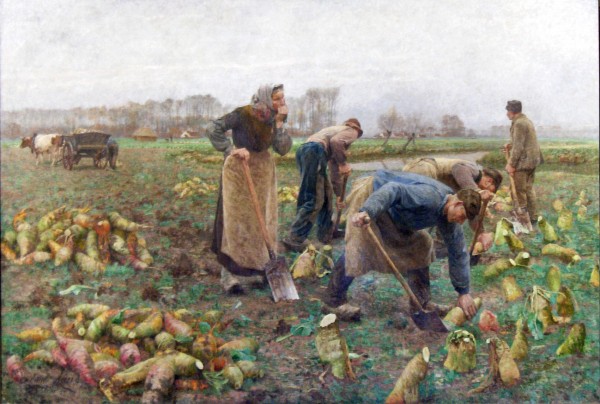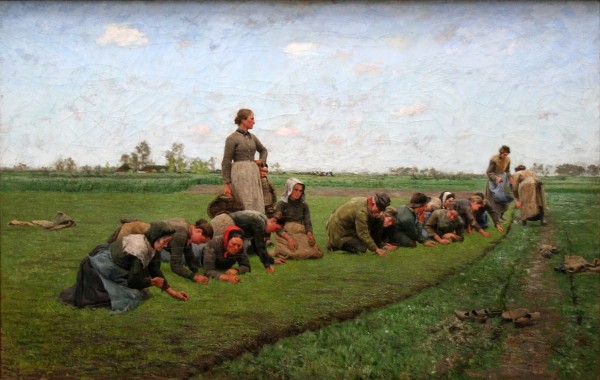Émile Claus
Tuesday, 18 March 2014




Work from his oeuvre.
“At the time of his debut, Emile Claus enjoyed fame chiefly as a portrait painter. The Antwerp and Brussels bourgeoisie almost immediately recognised in him the hand of a master, able to capture reality in charming, romantic-realistic showpieces, genre scenes and official portraits. He mastered the landscape well only during a journey to North Africa and Spain in 1879-1880. Suddenly convention disappeared from his work. His outlook became unrestrained, his touch powerful and his application of paint, thick. Romantic-realism would never again return in his bravado pieces.
He would gradually direct his antennae outside Antwerp and Belgium, and became acquainted with naturalism. The naturalists preferred depicting everyday life in the city and especially in the countryside. In essence, it was a sequel to realism, albeit with the sharp, social-critical edges smoothed. The monumental landscape paintings that Claus sent to the exhibitions in 1880s were all naturalistic in nature, while he gradually showed himself to be sensitive to French impressionism. Despite the great success he enjoyed with his naturalistic exhibition pieces at the major exhibitions in Brussels and Paris, he was looking for a different way. The sharp, photographic realism and the picturesque anecdotal character so characteristic for the period around 1886-1887, were gone two years later. Claus was more than forty years old when he was confronted with the most important revolution in his career. He withdrew from the official circuit from which he obtained much support, and for three winters long lived in an atelier in Paris. He gradually came under the spell of the French impressionists, and back at the home front, he incorporated their technique into his own work. However, his paintings were never really French. Even the light had a more northern tint than that of his French predecessors. This shimmering light received form via a nervous touch capable of bringing about a magnificent harmony via a wide range of short and long strokes. However spontaneous his paintings may appear, they were always the fruit of a thoroughgoing study. They are all the result of passionate study. This manner of working persisted for almost fifteen years, until the beginning of the war.” – Oscar Devos